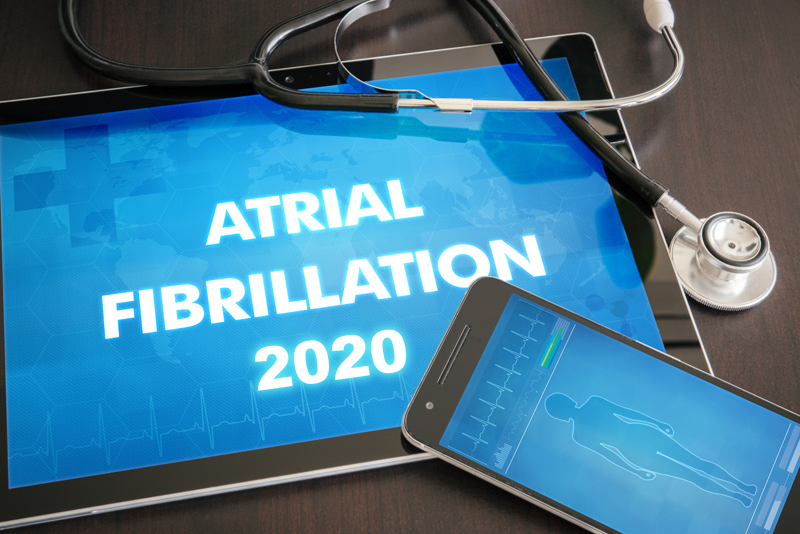Atrial fibrillation (AF or AFib) is the most common arrhythmia (irregular heartbeat) encountered in the critical care environment. It is caused by problems with the heart’s electrical system. AF can lead to longer ICU stay and is associated with an increased risk of mortality. The American Heart Association estimates that about 2.7 million Americans are living with AF. Effective October 1, 2019, ICD-10 category 148 Atrial fibrillation has been expanded from four codes to include more specific options for persistent and chronic atrial fibrillation. To ensure appropriate reimbursement, critical care specialists should be acquainted with new and existing codes and their definitions as well as ensure documentation that reflects the professional services that support the codes. Critical care medical billing and coding services are available to help with this.
What is Atrial Fibrillation?
Atrial fibrillation is an irregular and often abnormally fast heartbeat that can lead to blood clots, stroke, heart failure and other heart-related complications. Normally, the heart contracts and relaxes to a regular beat (between 60 and 100 beats a minute) when the person is resting. In AF, the upper chambers of the heart beat irregularly and sometimes at a very fast pace, and can be much higher than 100 beats a minute.
AF is wide spread among older patients admitted to ICU with chronic conditions who are at risk for critical illness. New-onset AF has been found to be a common complication after cardiac surgery and also occurs among critically ill patients with a high incidence of renal failure and sepsis.
Symptoms
AF can exist without any symptoms and remain undetected until the person has a medical check-up. The common signs and symptoms of atrial fibrillation are:
- Palpitations – fast irregular heartbeat, pounding, fluttering or flip-flops in the chest
- Dizziness
- Shortness of breath
- Fatigue
- Weakness
- Reduced ability to exercise
- Lightheadedness
- Chest pain
AF can cause blood clots, stroke, hypotension, and heart failure with subsequent organ dysfunction.
Causes
The exact causes of atrial fibrillation are unknown, but it is generally considered the result of high blood pressure and coronary artery disease. Conditions that increase risk of developing AF include:
- Age
- Hypertension
- Underlying heart disease and conditions – Heart attack, coronary artery disease, abnormal heart valves, congenital heart defects
- Family history
- Sleep apnea
- Thyroid disease
- Diabetes
- Asthma
- Chronic kidney disease
- Previous heart surgery
- Viral infections
- Obesity
- Stress due to surgery, pneumonia or other illnesses
- Exposure to stimulants, such as medications, caffeine, tobacco or alcohol
- Sick sinus syndrome
- Drinking alcohol
Since there are different types of arrhythmias, testing using an electrocardiogram (ECG/EKG), Holter monitor, event recorder, or echocardiogram may be ordered to enable correct diagnosis. Identifying AF type will facilitate proper treatment planning.
ICD-10 Codes to report Atrial Fibrillation
In 2019, there were four codes to report AF:
- I48.0 Paroxysmal AF
- I48.1 Persistent
- I48.2 Chronic
- I48.91 Unspecified
On October 1, 2020, category I48 was expanded, with more specific options for persistent and chronic atrial fibrillation as follows:
- I48 Atrial fibrillation and flutter
- I48.0 Paroxysmal atrial fibrillation
- I48.1 Persistent atrial fibrillation
- I48.11 Longstanding persistent atrial fibrillation
- I48.19 Other persistent atrial fibrillation
- Chronic persistent atrial fibrillation
- Persistent atrial fibrillation, NOS
- I48.2 Chronic atrial fibrillation
- I48.20 Chronic atrial fibrillation, unspecified
- I48.21 Permanent atrial fibrillation
- I48.91 Unspecified atrial fibrillation
- I48.92 Atrial flutter
New AF Code Definitions
- Knowing the definitions for the new AF codes is necessary to use them correctly (www.findacode.com):
- Paroxysmal atrial fibrillation – intermittent atrial fibrillation that comes and goes, but never lasts longer than a week and resolves on its own without treatment
- Persistent atrial fibrillation – lasts longer than a week and less than a year; requires pharmacologic treatment or cardioversion in order to return the heart to a normal rhythm and repeat treatment when/if the condition returns
- Longstanding, persistent atrial fibrillation – persistent atrial fibrillation which lasts longer than a year and always requires repeat pharmacologic or electrical cardioversion
- Other persistent atrial fibrillation – usually documented as “chronic persistent” or “persistent NOS,” Other persistent atrial fibrillation is that which lasts longer than a week, but less than a year; requires pharmacologic treatment or electrical cardioversion.
- Chronic atrial fibrillation, unspecified – lasts longer than a year and is non-refractory, meaning it won’t respond to treatment and has not yet been identified in the medical record as permanent
- Permanent atrial fibrillation – has lasted longer than a year and is unresponsive to cardioversion. Cardioversion for these patients is no longer indicated, cannot be performed, or will not be performed.
The record must identify the condition as permanent, or the code for chronic, unspecified (I48.20) should be reported. - Unspecified atrial fibrillation – reported when the documentation does not identify the specific type of atrial fibrillation
Coding AF – Key Considerations
In 2020, ICD-10 added new codes for chronic, permanent, persistent, and long-standing permanent AF, all of which are CCs (comorbidities/complications). In an inpatient setting, persistent atrial fibrillation needs to be reported as a confirmed diagnosis. A Nov 2019 ACP Hospitalist article discussed key points about using the new ICD-10 codes for AF:
- “Chronic AF” is a nonspecific term that indicates that AF of any type has lasted more than three months and could include permanent, persistent, or long-standing persistent AF. Chronic AF is reported using code I48.20 (a CC) when the specific type of AF is not documented.
- When the diagnosis is atrial flutter/fibrillation, assign both the code for atrial flutter (I48.92) and atrial fibrillation based on the specific type of atrial fibrillation.
- The correct CC status of each specified AF type must be captured. For this, the documentation should indicate the specific type of AF and should never simply be left unspecified as “AF” (code I48.91, a non-CC).
- AF successfully controlled by cardiac ablation alone (not requiring antiarrhythmic medications) should be reported using code Z86.79 (history of AF).
- If cardiac ablation for AF was performed and the patient still requires medication to prevent recurrences, the diagnosis should be AF and not “history of AF”.
- History of AF (code Z86.79) should be used only when paroxysmal AF has been converted to sinus rhythm and requires no ongoing treatment to prevent recurrence or when ablation therapy alone has been used to control AF.
The codes assigned should support medical necessity. Test reports may provide details about a diagnosis not included in the ordering provider’s documentation. In this case, a higher specificity code to support that diagnosis can be reported only if the ordering physician reviewed the results of the test and stated that he/she agreed with the findings (www.findacode.com).
Partnering with an expert critical care coding and medical billing service provider is a practical option to ensure correct reporting of atrial fibrillation using the latest codes.




